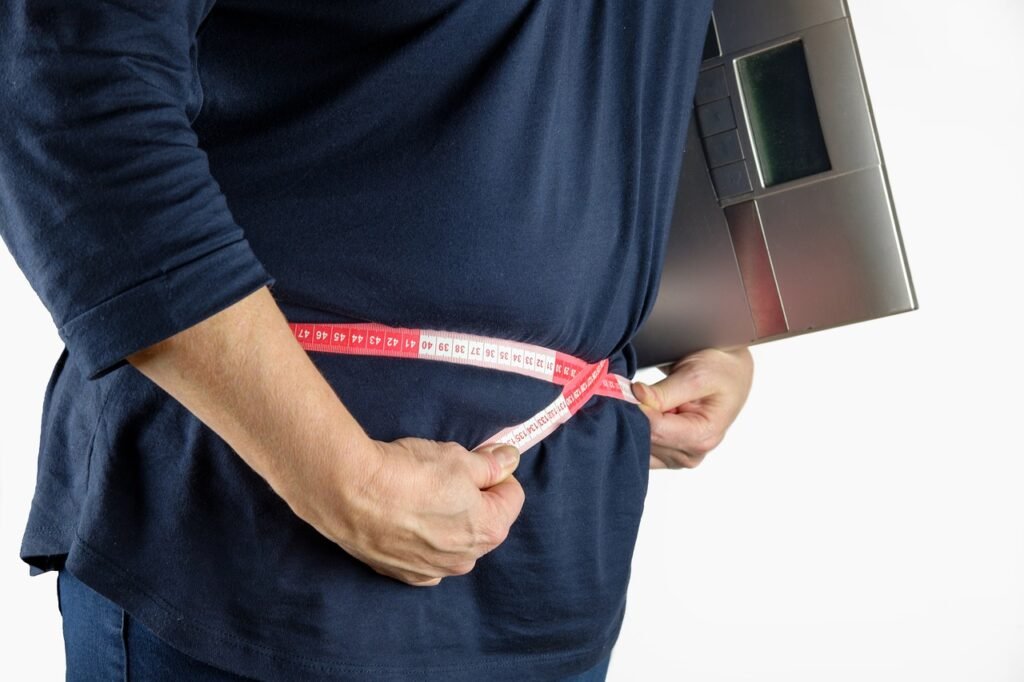Belly fat is more than just a nuisance; it’s one of the most stubborn areas for fat loss and poses serious health risks. Many people struggle to lose belly fat, but with the right combination of diet, exercise, and lifestyle changes, you can reduce excess fat and achieve a flatter, healthier midsection. This comprehensive guide will cover all aspects of losing belly fat effectively, focusing on science-backed strategies, actionable tips, and sustainable habits.
Table of Contents:
- Understanding Belly Fat
- Why Losing Belly Fat is Important
- The Role of Diet in Reducing Belly Fat
- a. Caloric Deficit
- b. Protein Intake
- c. Whole Foods vs. Processed Foods
- d. Cutting Back on Sugars and Carbs
- The Role of Exercise in Reducing Belly Fat
- a. Cardio Exercises
- b. Strength Training
- c. HIIT (High-Intensity Interval Training)
- d. Core Exercises: What Works, What Doesn’t
- Lifestyle Changes to Support Fat Loss
- a. Sleep Quality and Its Impact
- b. Stress Management
- c. The Role of Hydration
- Tracking Your Progress
- Common Myths About Losing Belly Fat
- Conclusion: Sustainable Approaches to a Healthier Lifestyle
1. Understanding Belly Fat
Before tackling belly fat, it’s essential to understand what it is and why it accumulates in the first place. Fat, in general, is necessary for the body as it stores energy, protects organs, and helps regulate temperature. However, the body stores fat in different ways:
- Subcutaneous fat: This is the fat stored just under the skin, which is relatively harmless but contributes to the appearance of a belly bulge.
- Visceral fat: This is the fat that wraps around your internal organs like the liver and intestines. Visceral fat is more dangerous and is associated with numerous health risks, including heart disease, type 2 diabetes, and inflammatory conditions.
Visceral fat is metabolically active and can release chemicals that interfere with hormones, leading to insulin resistance and other metabolic disorders. The good news is, visceral fat is often easier to lose with lifestyle changes than subcutaneous fat.
2. Why Losing Belly Fat is Important
Carrying excess belly fat isn’t just a cosmetic concern; it’s a significant health risk. Having too much visceral fat is linked to:
- Increased risk of cardiovascular diseases: Belly fat releases fatty acids and pro-inflammatory cytokines that can harm your heart health.
- Insulin resistance and type 2 diabetes: High levels of belly fat can disrupt insulin function, leading to blood sugar imbalances and the development of diabetes.
- Higher risk of certain cancers: Studies have shown a correlation between belly fat and an increased risk of breast and colon cancer.
- Sleep apnea and respiratory issues: Excess fat around the abdominal area can compress the diaphragm and lead to breathing problems, particularly during sleep.
Losing belly fat, therefore, isn’t just about achieving a leaner figure; it’s about improving your overall health and longevity.
3. The Role of Diet in Reducing Belly Fat

a. Caloric Deficit
The fundamental rule for losing fat—whether it’s belly fat or body fat in general—is that you need to burn more calories than you consume. This is called a caloric deficit. To create this deficit:
- Calculate your maintenance calories: This is the number of calories your body needs to maintain its current weight. You can use an online calculator that considers your age, sex, weight, height, and activity level.
- Reduce your caloric intake: Aim to reduce your calorie intake by 500-750 calories per day. This should lead to about 1-2 pounds of fat loss per week, which is a sustainable and healthy rate of weight loss.
b. Protein Intake
High-protein diets are beneficial for fat loss, particularly belly fat, because protein helps to:
- Boost metabolism: Protein has a higher thermic effect compared to fats and carbs, meaning your body burns more calories to digest it.
- Reduce cravings: Protein helps to keep you fuller for longer, reducing the likelihood of overeating or snacking on high-calorie foods.
- Maintain muscle mass: During weight loss, it’s crucial to preserve muscle mass, and a high protein intake helps prevent muscle loss while losing fat.
Good sources of protein include lean meats, eggs, fish, dairy, legumes, and plant-based alternatives like tofu and tempeh.
c. Whole Foods vs. Processed Foods
The quality of your diet plays a significant role in fat loss. Processed foods often contain hidden sugars, unhealthy fats, and empty calories that contribute to weight gain. To reduce belly fat, focus on:
- Whole, unprocessed foods: These include vegetables, fruits, lean proteins, whole grains, nuts, and seeds.
- Fiber-rich foods: Foods high in soluble fiber, such as oats, flaxseeds, avocados, and legumes, can help reduce belly fat by promoting feelings of fullness and improving gut health.
d. Cutting Back on Sugars and Carbs
Excess sugar intake, particularly from sugary beverages and processed snacks, contributes to fat gain, especially around the abdomen. Reducing your intake of added sugars and refined carbohydrates can help promote fat loss.
- Limit sugary drinks: Sodas, fruit juices, and energy drinks are loaded with sugars and provide empty calories.
- Focus on complex carbs: Replace refined carbohydrates like white bread and pasta with whole grains, legumes, and vegetables, which are more nutritious and digest slowly, helping to regulate blood sugar levels.
4. The Role of Exercise in Reducing Belly Fat
While diet plays a key role in fat loss, exercise helps boost your results by burning calories, building muscle, and improving metabolism.

a. Cardio Exercises
Cardiovascular exercises are effective for burning calories and promoting fat loss. Some of the most effective cardio exercises for belly fat loss include:
- Running or jogging: Both are high-calorie-burning activities that can help target belly fat over time.
- Cycling: An excellent way to boost heart rate and improve stamina while burning fat.
- Swimming: Provides a full-body workout that engages multiple muscle groups and burns fat effectively.
Aim for at least 150-300 minutes of moderate-intensity aerobic activity each week to support fat loss.
b. Strength Training
Strength training helps build muscle, which in turn increases your metabolic rate. Muscle tissue burns more calories at rest than fat tissue, so the more muscle you have, the more calories your body will burn, even when you’re not exercising.
Focus on compound exercises that target large muscle groups, such as:
- Squats
- Deadlifts
- Bench presses
- Pull-ups
Strength training also helps prevent muscle loss when you’re in a calorie deficit, ensuring that most of the weight you lose comes from fat, not muscle.
c. HIIT (High-Intensity Interval Training)
HIIT involves short bursts of intense exercise followed by brief periods of rest or low-intensity activity. This type of training has been shown to be particularly effective for burning fat, including belly fat, due to its ability to increase metabolic rate for hours after the workout.

Sample HIIT workout:
- 30 seconds of sprinting
- 30 seconds of walking
- Repeat for 15-20 minutes
d. Core Exercises: What Works, What Doesn’t
Contrary to popular belief, spot reduction—or losing fat from one specific area of the body by targeting it with exercise—doesn’t work. Doing hundreds of sit-ups won’t melt away belly fat. However, strengthening your core can improve posture, build muscle, and create a toned appearance once belly fat is reduced through overall fat loss.
Effective core exercises include:
- Planks
- Russian twists
- Bicycle crunches
- Leg raises
5. Lifestyle Changes to Support Fat Loss
Beyond diet and exercise, several lifestyle factors can impact belly fat.
a. Sleep Quality and Its Impact
Lack of sleep has been linked to increased weight gain, particularly belly fat. Sleep deprivation can disrupt hormones that regulate hunger (ghrelin) and fullness (leptin), leading to overeating and cravings for high-calorie foods.
- Aim for 7-9 hours of quality sleep per night.
- Establish a regular sleep schedule and create a relaxing bedtime routine to improve sleep quality.
b. Stress Management
Chronic stress increases the production of cortisol, a hormone that promotes fat storage, particularly in the abdominal area. Managing stress is crucial for losing belly fat.
- Practice mindfulness, meditation, or deep breathing exercises.
- Engage in stress-reducing activities like yoga or walking in nature.
- Make time for hobbies and relaxation.
c. The Role of Hydration
Staying hydrated is essential for fat loss. Drinking water helps boost metabolism, reduce appetite, and improve digestion.
- Drink at least 8 glasses of water per day.
- Replace sugary drinks with water or herbal teas to reduce calorie intake.
6. Tracking Your Progress
When trying to lose belly fat, it’s important to track your progress accurately.
- Take measurements: Use a tape measure to track the circumference of your waist every few weeks. This is a more reliable indicator of fat loss than just tracking weight on the scale.
- Take progress photos: Visual changes can sometimes be more apparent than what the scale shows.
- Track body fat percentage: Devices like body fat scales or calipers can provide more insight into how much fat you’re losing versus muscle.
7. Common Myths About Losing Belly Fat
There are numerous myths and misconceptions about losing belly fat that can derail your progress:
- Myth 1: You can spot-reduce fat: As mentioned earlier, you cannot target fat loss in one specific area.
- Myth 2: All calories are equal: The quality of the food you eat matters. Processed foods with the same calories as whole foods can have very different effects on your metabolism and fat storage.
- Myth 3: Crunches are the best exercise for belly fat: Crunches build abdominal muscles, but they won’t burn belly fat on their own.

8. Conclusion: Sustainable Approaches to a Healthier Lifestyle
Losing belly fat is achievable, but it requires consistency, patience, and a holistic approach. Combining a healthy, calorie-controlled diet with regular exercise and positive lifestyle changes will yield the best results. Avoid crash diets, unrealistic expectations, and quick fixes; instead, focus on creating sustainable habits that improve your overall health and wellbeing.
The journey to lose belly fat is different for everyone, but by following these science-backed strategies and staying committed, you can improve your health, reduce belly fat, and enjoy a leaner, more energized body.


